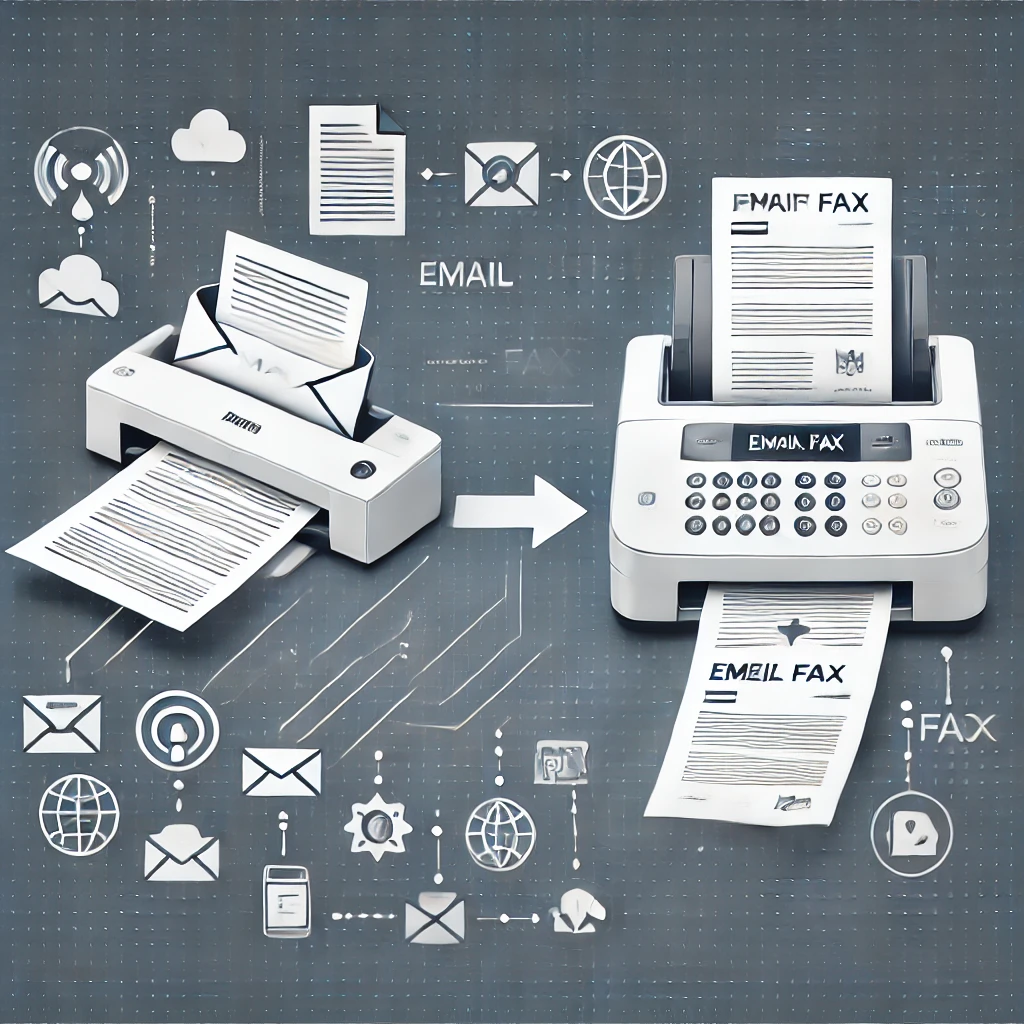Email faxing allows users to send and receive faxes directly through their email accounts without the need for a traditional fax machine. By converting digital files into a format readable by fax machines, email faxing is a convenient, efficient, and eco-friendly alternative to traditional faxing methods.

What Is Email Faxing?
Email faxing, also known as online faxing, allows users to send and receive faxes through their email accounts—eliminating the need for bulky fax machines, dedicated phone lines, and reams of paper. This method uses cloud-based services that act as a bridge between traditional fax technology and modern digital communication.
In this article, we’ll explore how email faxing works, dive into its benefits and drawbacks, and answer common questions such as “What is a fax email reader?” and “How does Gmail fax work?”
How Email Fax Works
Email faxing works by leveraging an online fax service, which acts as a middleman between your email and traditional fax machines. When you send an email to a recipient’s fax number, the online fax service converts your email and attachments into a fax-compatible format. The recipient receives the fax on their fax machine, just as if you had sent it from a traditional fax machine.
Here's a simplified breakdown of the process:
- Choose an Online Fax Service: Sign up for a service that supports email faxing, such as eFax or Gmail Fax Pro.
- Compose an Email: Open your email client and create a new message. Enter the recipient’s fax number followed by the online fax service's domain (e.g., 123456789@faxservice.com).
- Attach Files: Attach the documents you want to fax (PDFs, Word docs, images, etc.).
- Send the Email: Hit send, and the service will convert your email into a fax.
- Receive Faxes: Incoming faxes will be received in your email inbox as PDF attachments.
By removing the need for traditional fax hardware, email faxing provides flexibility, enabling users to send and receive faxes from anywhere with an internet connection.
What Is a Fax Email Reader?
A fax email reader is a tool or service that allows users to receive fax messages directly to their email inbox. Instead of printing out the fax or using a fax machine, the fax is delivered as an email attachment, usually in PDF format. This makes it easier to store, forward, or archive faxes digitally.
Some popular fax email reader services include:
- eFax
- MyFax
- MetroFax
These services simplify the fax process by converting paper faxes into digital files accessible through your email.
How Gmail Fax Works
Faxing through Gmail is straightforward and follows the same principles as other email-to-fax services. Here’s how it works:
- Choose a Gmail-Compatible Fax Service: Services like Gmail Fax Pro or eFax integrate seamlessly with Gmail.
- Compose an Email in Gmail: Open Gmail and click on "Compose." Enter the recipient's fax number followed by the service's domain (e.g., 123456789@faxservice.com).
- Attach the Document: Attach the file(s) you want to fax (PDFs, images, etc.).
- Send the Email: Once sent, the online fax service converts your email into a fax and delivers it to the recipient's fax machine.
Incoming faxes are received in your Gmail inbox, with the fax attached as a PDF.
Step-by-Step Guide to Sending an Email Fax
- Select a Reliable Fax Service: Ensure it integrates with your email.
- Compose a New Email: Open your email client and type the recipient’s fax number in the recipient field.
- Attach the Necessary Files: Add the documents you need to fax.
- Send the Email: The service will convert and send the fax.
- Receive Confirmation: You may receive a confirmation email that your fax was successfully sent.
Advantages of Email Faxing
- Convenience: Send and receive faxes from anywhere with an internet connection.
- Cost Savings: No need to maintain fax machines or phone lines.
- Environmentally Friendly: Digital faxes reduce paper waste.
- Security: Many email fax services offer encryption for added security.
- Scalability: Easy to handle large volumes of faxes without physical limitations.
Disadvantages of Email Faxing
- Dependent on Internet Access: You need a stable internet connection.
- Potential for Data Breaches: Email systems can be vulnerable to cyber threats if not properly secured.
- Service Fees: While more cost-effective than traditional faxing, some services charge monthly fees.
- Compatibility Issues: Not all online fax services support every type of file format.
Use Cases for Email Faxing
- Legal Professionals: Secure document transfer and client communication.
- Healthcare Providers: Compliance with HIPAA standards for secure faxing of patient records.
- Small Businesses: Cost-effective solution for sending invoices, purchase orders, and contracts.
- Remote Workers: Send and receive faxes without needing access to an office fax machine.
Email Fax Alternatives
While email faxing is highly convenient, other digital communication options may also suit your needs, such as:
- E-signature platforms like DocuSign
- File sharing services like Dropbox or Google Drive
- Cloud-based phone systems with built-in fax capabilities
These alternatives may be more suitable depending on your industry and document-sharing requirements.
Conclusion
Email faxing offers a streamlined, efficient, and eco-friendly alternative to traditional faxing, making it ideal for modern businesses and individuals. By using a trusted fax service, you can send and receive faxes directly from your email, such as Gmail, with minimal setup and cost. Whether you're in the legal, healthcare, or business sector, email faxing can simplify your communication needs while offering the flexibility to manage faxes from any device.